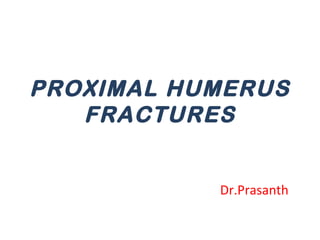Proximal humerus fractures are common, especially in patients over 65, and are often non-displaced with a good prognosis for conservative treatment. Surgical intervention is generally reserved for complex cases, including fracture-dislocations and significant displacement. Various treatment options are outlined, including non-operative management and several surgical techniques, addressing prognosis, recovery, and potential complications.


































































